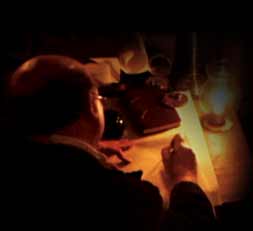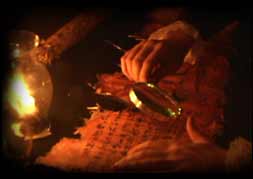|
Translating Egyptian |
|
| Listen and watch as Joseph Smith describes
translating a lost book of Abraham from an Egyptian papyrus scroll he
purchased from a traveling antiquities dealer. |
 |
|
|
|
The Facsimiles |
 |
Mormon founder Joseph Smith included
illustrations from an Egyptian scroll in his Book of Abraham
translation. But discrepancies in the copied illustrations were an early
clue to Egyptologists that the Mormon prophet may not have understood
the ancient Egyptian language. |
|
|
A Dramatic Discovery |
|
| In 1966 the Metropolitan
Museum in New York City quietly approached the Church of Jesus Christ of
Latter-day Saints with news that it had in its archives ancient Egyptian
papyrus manuscripts that once belonged to Mormon prophet Joseph Smith —
manuscripts long thought to have been destroyed in the Great Chicago
Fire of 1871! |
 |
|
|
|
The Critical Link |
|
Were the ancient Egyptian papyri found at
the Metropolitan Museum pieces of the actual scroll from which Mormon
founder Joseph Smith produced a lost book of Abraham? Two top
Egyptologists examine the papyri and give their verdict. Dr. Robert Ritner, associate professor of Egyptology at the University of Chicago
was commissioned to do a complete translation of the scroll Joseph Smith
identified as a lost book of Abraham. He explains what he found. |

 |
|
|
|
|
|
|

